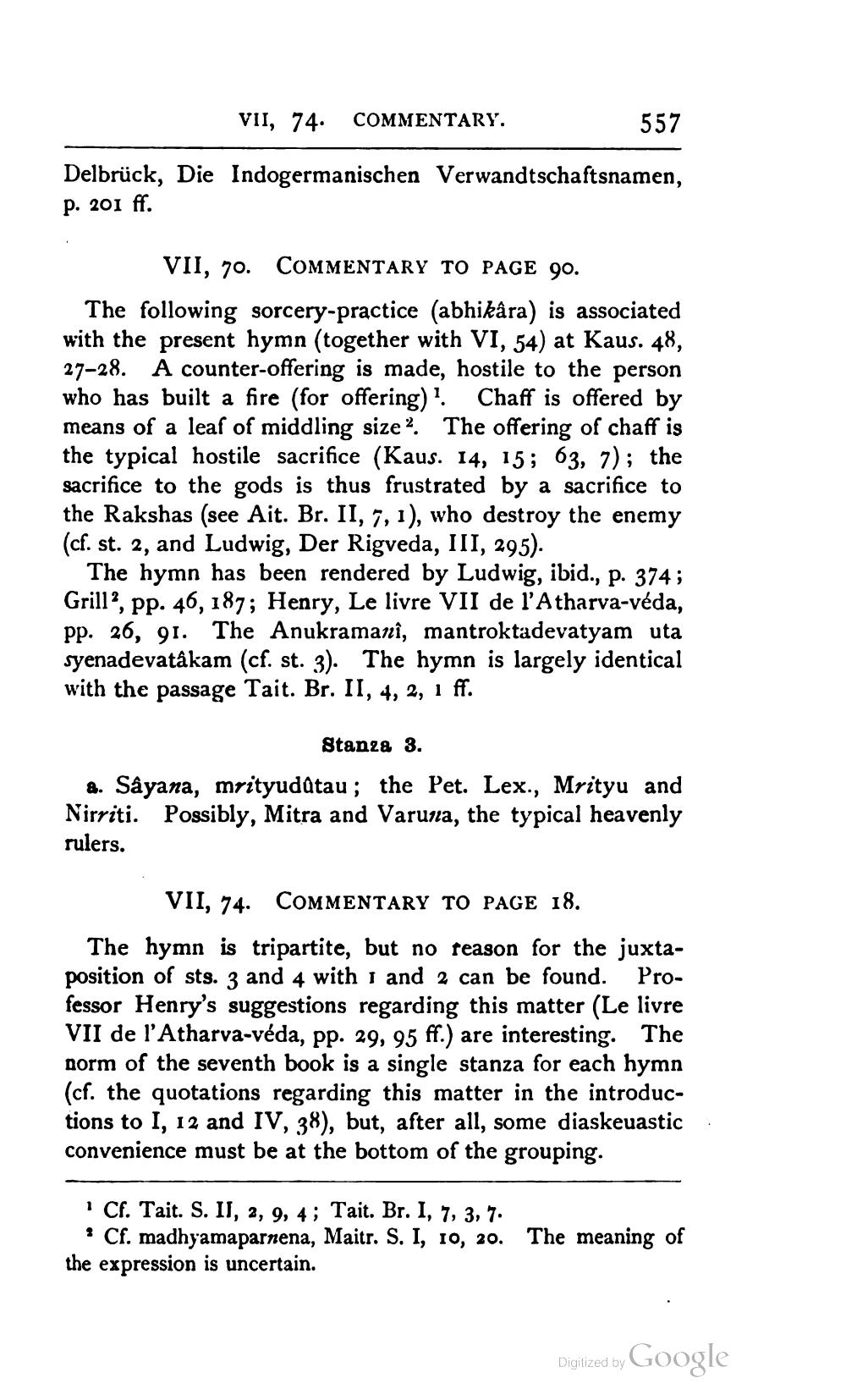________________
VII, 74. COMMENTARY.
557
Delbrück, Die Indogermanischen Verwandtschaftsnamen, p. 201 ff.
VII, 70. COMMENTARY TO PAGE 90. The following sorcery-practice (abhikâra) is associated with the present hymn (together with VI, 54) at Kaus. 48, 27-28. A counter-offering is made, hostile to the person who has built a fire (for offering). Chaff is offered by means of a leaf of middling size 2 The offering of chaff is the typical hostile sacrifice (Kaus. 14, 15; 63, 7); the sacrifice to the gods is thus frustrated by a sacrifice to the Rakshas (see Ait. Br. II, 7, 1), who destroy the enemy (cf. st. 2, and Ludwig, Der Rigveda, III, 295).
The hymn has been rendered by Ludwig, ibid., p. 374; Grill?, pp. 46, 187; Henry, Le livre VII de l'Atharva-véda, pp. 26, 91. The Anukramani, mantroktadevatyam uta syenadevatakam (cf. st. 3). The hymn is largely identical with the passage Tait. Br. II, 4, 2, 1 ff.
Stanza 3. 4. Sâyana, mrityudutau; the Pet. Lex., Mrityu and Nirriti. Possibly, Mitra and Varuna, the typical heavenly rulers.
VII, 74. COMMENTARY TO PAGE 18. The hymn is tripartite, but no reason for the juxtaposition of sts. 3 and 4 with 1 and 2 can be found. Professor Henry's suggestions regarding this matter (Le livre VII de l'Atharva-véda, pp. 29, 95 ff.) are interesting. The norm of the seventh book is a single stanza for each hymn (cf. the quotations regarding this matter in the introductions to I, 12 and IV, 38), but, after all, some diaskeuastic convenience must be at the bottom of the grouping.
Cf. Tait. S. II, 2, 9, 4; Tait. Br. I, 7, 3, 7. . Cf. madhyamaparnena, Maitr. S. I, 10, 20. The meaning of the expression is uncertain.
Digized by Google




